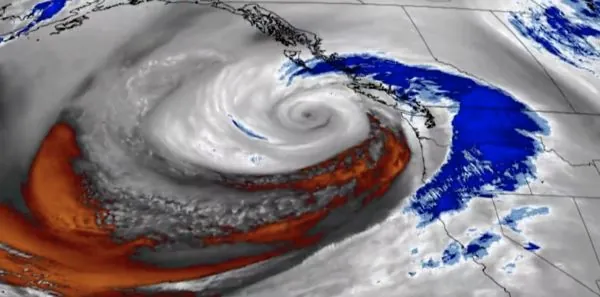
Meet the Mind-Blowing 'Zombie Star' Spinning at a Jaw-Dropping 716 Times Per Second!
2024-11-10
Author: Sophie
Introduction
Astronomers have unveiled a breathtaking cosmic anomaly known as the 'zombie star,' a small yet exceedingly dense neutron star that is wreaking havoc in the universe. Located an astonishing 26,000 light-years from Earth, this bizarre entity spins wildly on its axis at a staggering rate of 716 rotations per second—making it one of the fastest-spinning stars ever documented!
Discovery Details
This incredible discovery was made using NASA’s NICER (Neutron Star Interior Composition Explorer) telescope. The neutron star is part of an X-ray binary system called 4U 1820-30, which is made up of a normal star and a collapsed star—either a neutron star or a black hole. The peculiar twist here is that our zombie star has a white dwarf companion, roughly the size of Earth, that orbits it every 11 minutes—the shortest known orbital period of any binary star system.
Unique Characteristics
But what makes this star truly extraordinary? The neutron star's intense gravitational pull snatches material from the white dwarf, leading to powerful thermonuclear bursts that are likened to atomic explosions. According to Jerome Chenevez, an associate professor at the Technical University of Denmark, 'During these bursts, the neutron star can become up to 100,000 times brighter than our Sun, releasing an enormous amount of energy.'
Research Insights
Researcher Gaurava Jaisawal elaborated that while initially studying the thermonuclear explosions from this binary system, they noticed remarkable oscillations hinting at the neutron star's mind-blowing rotation speed. If further observations confirm this finding, the 4U 1820-30 neutron star would join the ranks of the fastest-spinning celestial objects known, alongside another neutron star called PSR J1748-2446.
Location and Observations
Located in the Sagittarius constellation, near the heart of our galaxy, this dazzling star system was thoroughly observed between 2017 and 2021, resulting in the detection of 15 thermonuclear X-ray bursts that showcased this cosmic chaos. The insights we glean from these extreme events could vastly improve our understanding of binary star systems and the intricate processes involved in the formation of elements throughout the universe.
Future Research
As researchers prepare for follow-up observations, many are eager to further unlock the mysteries of this unique pairing of dead stars and the fantastical phenomena that arise from their interactions. Are we on the brink of uncovering more secrets of the universe? Stay tuned for what’s next in this galactic saga!









 Brasil (PT)
Brasil (PT)
 Canada (EN)
Canada (EN)
 Chile (ES)
Chile (ES)
 España (ES)
España (ES)
 France (FR)
France (FR)
 Hong Kong (EN)
Hong Kong (EN)
 Italia (IT)
Italia (IT)
 日本 (JA)
日本 (JA)
 Magyarország (HU)
Magyarország (HU)
 Norge (NO)
Norge (NO)
 Polska (PL)
Polska (PL)
 Schweiz (DE)
Schweiz (DE)
 Singapore (EN)
Singapore (EN)
 Sverige (SV)
Sverige (SV)
 Suomi (FI)
Suomi (FI)
 Türkiye (TR)
Türkiye (TR)